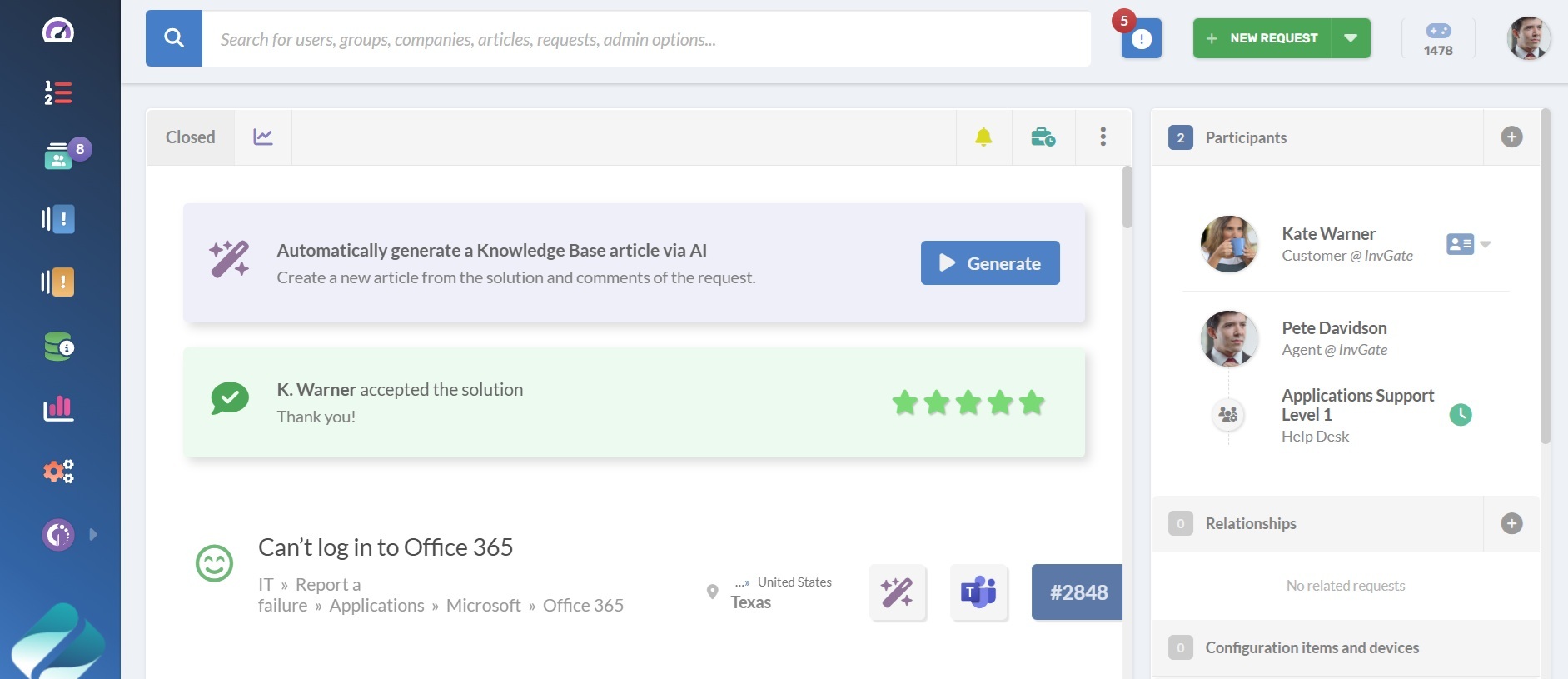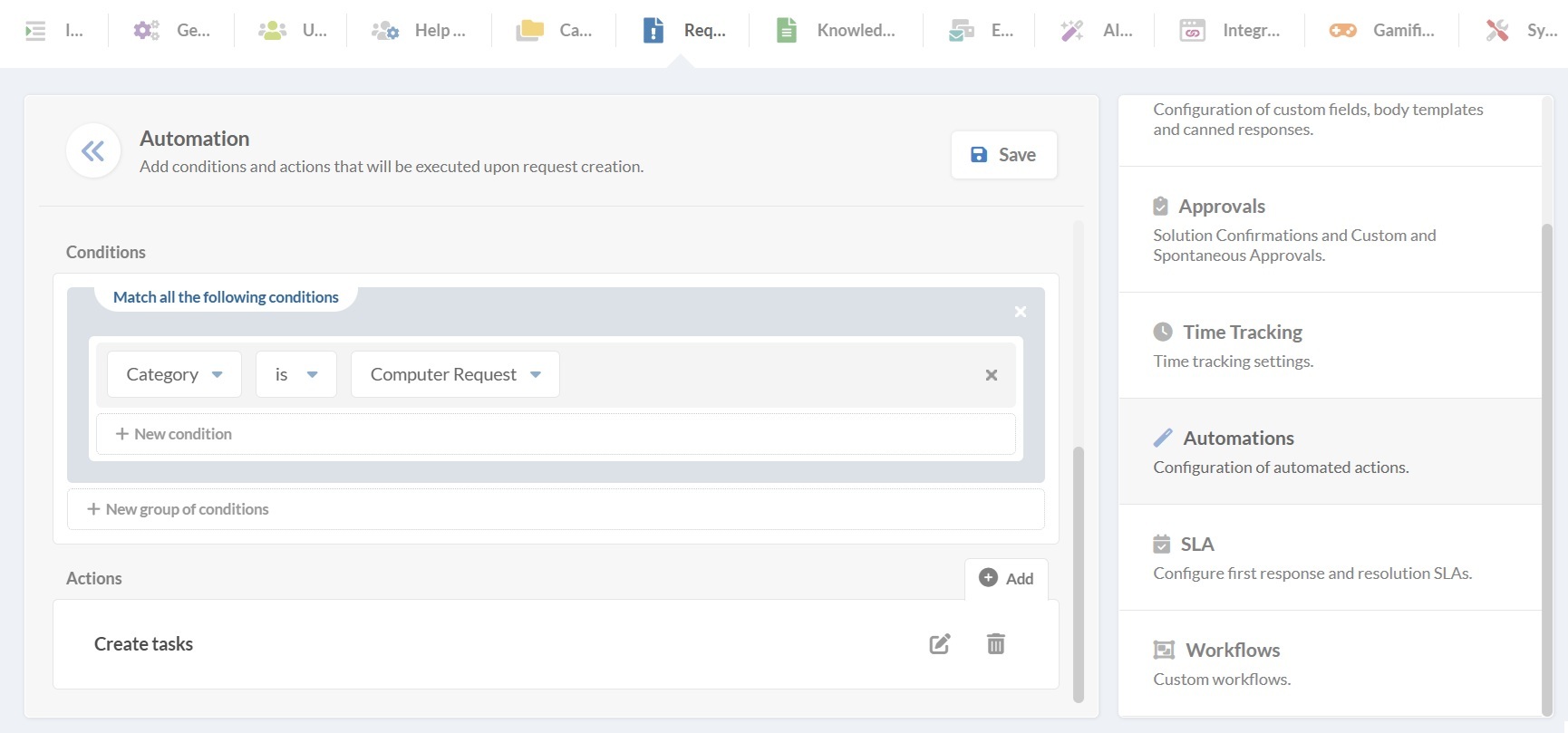How to turn ticket resolutions into knowledge base articles
Not every ticket should disappear once it’s closed. Some involve complex troubleshooting worth documenting, while others are simple but keep coming up. Either way, turning ticket resolutions into knowledge base articles saves time for agents and gives employees faster answers.
With InvGate Service Management, you can generate articles directly from closed tickets using AI. Instead of rewriting or copying details, the platform creates a draft for you — making it easy to turn real support solutions into searchable, reusable content.
#1. Open a closed ticket and generate the article
Once a ticket is resolved, you will see the option of creating a knowledge article automatically right on top of your screen. There, you must click on “Generate”.

Next, InvGate lets you pick the relevant messages and resolution steps to send through the AI.
- Select which parts of the communication to include.
- Leave out unrelated messages (like scheduling or remote session confirmations).

#2. Review and edit the AI draft

After a few seconds, you’ll see a complete article draft based on the ticket. The system organizes the information into a clear structure with a title, description, and step-by-step instructions.
- Review the draft in the editor.
- Adjust the title.
- Confirm the description, which helps with search results.
- Add screenshots, images, or related links.
- Assign the article to a category (like IT support > Applications > Microsoft).
- Select visibility.
- Private access: Agents, managers and administrators only.
- Registered users: All the above plus end-users.
- Public access: For registered and unregistered users, using a public URL.
#3. Save and publish
Once you hit save, the article becomes available in your knowledge base. Employees can:
- Search for the solution by keywords.
- Add the article to their favorites.
- Download a copy.
- Leave comments or rate its usefulness.